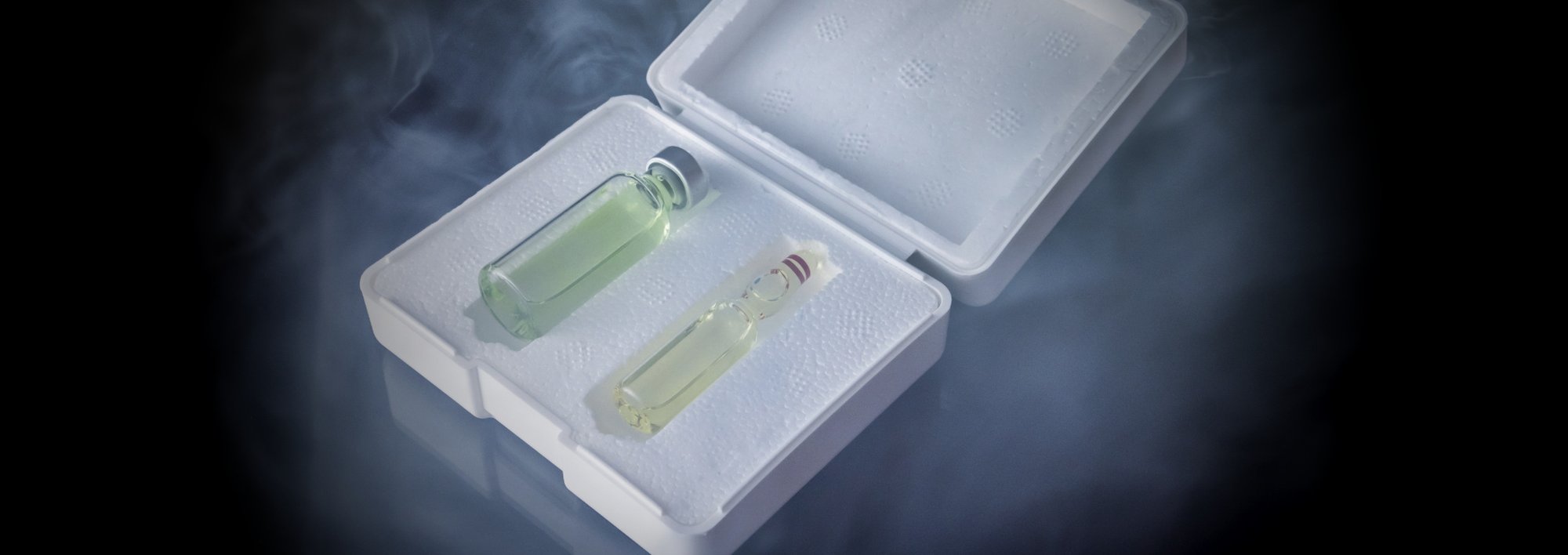A primary requirement in the pharmaceutical industry is to assure the quality of the pharmaceutical product throughout its entire lifecycle, beginning with using the correct quality of raw materials up to the final delivery of the medicinal product to the patient.
In the last few years, shipping conditions have been gaining significantly more attention, not only from the pharma industry but also from the public.
This article will briefly explain peculiarities and the importance of cold chain in shipping validation, detailing some of the critical points which have been encountered and some of the solutions found.
INTRODUCTION
During the past two years, public attention was focused on the COVID 19 pandemic and all related topics. In particular, substantial interest was raised with respect to the temperature controlled transportation of Covid vaccines, which had to be stored at very low temperatures and undergo lengthy travel to reach the various final destinations throughout Europe.
Although the above-mentioned case was very peculiar, the pharmaceutical industry, and the surrounding emergency companies working in the pharma field are accustomed to dealing with demanding, controlled temperature condition situations and for the extreme temperature conditions required.
In the following chapters, we will examine in detail the primary points regarding shipping validation, exploring more deeply what is known as the cold chain field.
GOOD DISTRIBUTION PRACTICE
Good Distribution Practice covers all activities connected with the distribution of finished pharmaceutical products from storage up to arrival at hospitals and pharmacies.
Products can be stored directly in the manufacturing plant and / or with distribution professionals. All issues which may arise are covered by the Good Storage Practice, including all details regarding the warehouse and storage conditions.
Products are then moved from the warehouse to different locations; this part of the process is verified and maintained under control by Transport and Shipping Validation.
All above-mentioned activities are fundamental to ensure that the quality of the product is guaranteed throughout the supply chain.
SHIPPING VALIDATION
Shipping Validation aims to verify and assure that the environmental conditions during product travel and transportation are maintained in the pre-defined conditions proven to be optimal to maintain the quality of the product.
The minimum requisites to be considered / verified for pharmaceutical product transportation are:
- Qualification of the trucks, when using ground transportation;
- Qualification of passive or active temperature controlled containers;
- Clean and controlled environments;
- At least a pre-defined temperature and relative humidity, as required;
- Any other specific critical variable, such as light or shock, which can adversely affect product quality.
It must also be considered that, depending on the transportation means, the length of the journey and the number of transport changes, a thorough study, risk-based and scientifically sounded, should be present to justify the validation approach of the different routes.
When particularly sensitive materials are involved and/or their value is high, it is a best practice to prepare a Master Shipping Validation Plan (MSVP), which can provide a roadmap for designing and qualifying temperature-sensitive medicinal products and also serve as a guidance document to provide meaningful temperature profiles for medicinal products in distribution to support the current business practices.
Details on the different aspects to be taken under consideration are reported in the following paragraphs.
1. Truck Qualification
Ground transportation is used especially during the last part of the journey, and when relatively short distances are required. Nevertheless, the so-called “last mile” is of paramount importance for the quality of the product, and as much attention should be paid to it as is given to other aspects of the process.
The first point to be addressed, even before considering any other critical parameter which can affect the quality of the product, is the verification of the correct functioning of the truck physically used for product movement.
The truck should be verified as correctly functioning and should be equipped with all the possible controls to assure that the product is safely handled all the way to the destination.
Furthermore, depending on the condition of the transportation, additional and more detailed requests of validation could be applicable, as reported in the following chapters.
Quite frequently, this activity is outsourced to dedicated shipping companies by the pharma company. In this case, it is the pharma company’s duty to verify that the contractor fulfills all the quality requisites by qualifying the provider and maintaining control of its performance during the time following the first validation audit and other regular audits.
2. Temperature Control Passive Container Qualification
Pharmaceuticals are identified by labelling, including the environmental conditions, to avoid any alteration of the quality of the product.
Whenever special temperature conditions are required during transportation, the most suitable solution should be chosen to fulfill this important requirement, and the maximum time the temperature is maintained in the required interval of temperature should be validated.
One of the quickest solutions for temperatures ranging from 0 to -10°C is the use of passive temperature-controlled containers.
These containers are made of insulated material through which the temperature is maintained by the use of cold packages distributed inside the box, which allow the temperature to be maintained at the range chosen.
The cold package can be used to maintain the desired temperature for as long as 48-72 hours, depending on the container characteristics and dimensions, the number of packages and the quantity of the product inside the box.
Other solutions for frozen product transportation, to reach a lower temperature of up to -50°C, can be accomplished by using dry ice and organizing a refill station if longer time for travel is needed.
Validation packages for standard internal configuration are typically sold along with the container.
3. Temperature Control Active Container Qualification
Lower, and particularly extremely low temperature needs can be satisfied by using an active container, meaning a container which must be qualified as if it were not less and not more than refrigerators and freezers, which can be moved and used as couriers for the pharmaceutical products.
In this case the full qualification stream should be in place before its use in transportation, and once products, route and timing are identified shipping validation can be executed.
4. Temperature and Relative Humidity Verification
The verification of these two parameters is requested for almost every storage area for pharma products, as temperature and relative humidity are the two main parameters tested during stability studies as they can impact the quality of the product by hastening a possible degradation reaction.
When shipment is foreseen, a continuous recording of the data for the load is requested to detect any discrepancies from the pre-defined condition.
Specific instrumentation, known as a data logger, is available on the market to perform this kind of activity, which can basically be divided in two main categories:
- Single-use data logger
- Data logger reusable
The primary function of the data logger is to collect data during the transport, record the data and when the load reaches its final destination, to download the data to review and store them to allow control of the compliance with the parameters with the pre-defined value.
It is important to underline that the data logger should be correctly calibrated and maintained, in case of re-use, and a complete validation package should be present for the data collection, management and storage system.
Principles of data integrity should be verified and validated.
A wide range of instruments are available on the market, and a variety of different models can be found to cover the specific needs in terms of measured parameters, ranges of parameter interval and type of data logger.
For air flight, a specific data logger compliant with IATA norms and technically designed to support different conditions during flight route must be used.
5. Other Critical Variable Verification
With respect to temperature and humidity, other parameters can be considered critical during pharmaceuticals transportation, such as shock (horizontal impact), light and position.
Specific instrumentation is also available to meet different needs in terms of measure, storage and downloading parameters.
If the parameter is considered critical, the chosen data logger should have the validation package for temperature and relative humidity, as mentioned above.
TEMPERATURE CONTROLLED SHIPPING AND COLD CHAIN VALIDATION
Shipping validation involves all the above mentioned prerequisites, and further verification of the impact of the route is required to ensure compliance of the critical parameters of the product during transportation along the entire route up to delivery of the product to its final destination.
This verification aims to measure, record and evaluate all critical parameters to ensure that these parameters are maintained in the pre-defined limits throughout the transportation up to when the final destination is reached, and the product is delivered.
Shipping validation can be executed by applying different approaches, depending on the route(s) involved and, when established routes are frequently applied and are well defined, a risk based approach can be applied to minimize the validation effort.
Risk based and scientifically sound approaches will identify the “worst case scenario,” leading to a shipping validation protocol for the identified route, which will cover all possible failures and corresponding risks associated. The worst case route validation will then be used to validate the pre-defined standard loads also covering the less risky routes.
The risk assessment approach should be commensurate to the complexity of the involved routes.
Whenever multiple and complex route scenarios are involved it is advisable to use well-structured QRM tools such as or similar to FMEA and FCMEA. If a less complex environment is being assessed a more simple “bracketing” approach can work as well as save time.
Route complexity is primarily linked to the following factors:
- Number of routes
- Number of stops along the route
- Change of transportation media
- Change of climatic zone
- Length of the journey
Other peculiarities depending on the route and the product should be examined case by case.
Pharmaceutical product transportation is particularly critical when low temperatures are involved; “Cold Chain” conditions are typically applicable to temperatures lower than 10°C, which can be reached and maintained only by using specific containers (passive or active) and instrumentation, as mentioned in the previous chapter.
Risks associated with this specific type of shipping are to be considered and evaluated carefully.
Criticalities change depending on the courier chosen, and the main points to be contemplated are:
- Passive courier
- Type of internal configuration
- Type of cold supporting material
- Need for a refill along the route
- Possible location to be reached for refill
- Maximum validation time of transportation
- Active Courier
- Availability of recharge locations in the event of a courier with limited internal battery life
- Availability of plug-in along the entire route for power-supplied courier
- Power supply compatibility along the route
CONCLUSION
Shipping validation in general, and specifically Cold Chain validation and its continuous need for verification, involves a series of different activities to be performed prior, during and after validation.
All documentation supporting the above-mentioned activities should be available to demonstrate the correct execution and positive output of the activities and the strength of the method chosen to guarantee the correct transport conditions for the specific product.
Any possible deviation and / or changes which can arise should be thoroughly investigated and remediated in case they have a direct impact on the quality of the product and on its critical parameters.
Temperature control is obviously highly challenging when extreme values are required to be maintained; nevertheless, several different solutions can be found and even challenging temperature control can be fulfilled with over-the-counter arrangements.





